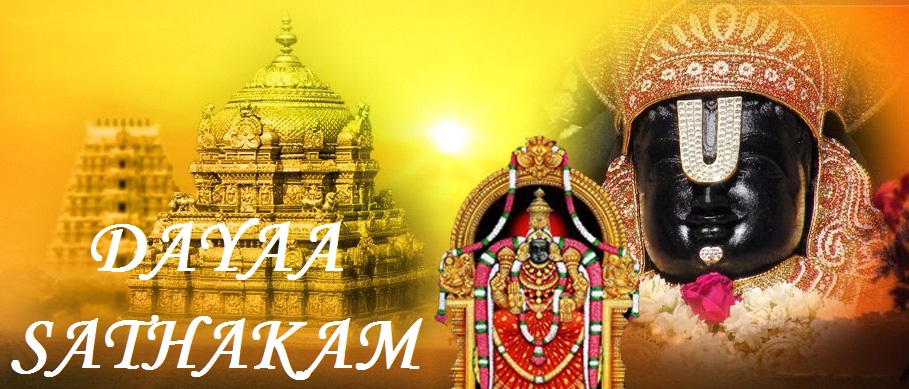vividha vibhava vyuuhaa vaasaaH paraM cha padaM vibhoH.
vR^iShagiri mukheSh.h veteSh.h vichchhaavadhi pratilabdhaye
dR^iTa vinihitaa nishreNistvaM daye nija parvabhiH..73
(MEANING):
Oh Dayaa DEvi! Your Lord is resplendent in five forms: (1) as ArchaavathAran at variousDhivya dEsams; Among some of them, He shines in a self-manifested form (Svayam VyakthaKshEthrams such as ThiruvEnkadam); In other dhivya dEsams, He manifests Himself in response to the power of the penance of DevAs or Rishis (Kaanchipuram, Thiruvaheendhrapuram and ThiruviNNagar et al; these KshEthrams are known as Saiddham), Dhaivam and Aarsham. (2) He also appears in Vibhava avathArams such as Matsya-Koorma- Nrusimha-Raama-KrishNAdhi avathArams (3) He also appears in VyUhaavathArams as VaasudEvan-SankarshaNan-Pradhyumnan and Aniruddhan (4) He resides as AntharyAmi Brahman in the heart cavities of the ChEthanams (5) Finally, He stays as Para VaasudEvan in Sri Vaikuntam.Dayaa Devi! All these five manifestations are a direct result of Your anugraham. You serve as the well bound steps of a ladder named Dayaa for Your Lord to descend from His Supreme abode of Sri Vaikuntam and the chEthanams to climb the same ladder to reach Your Lord, the boon granting Kalpaka tree and pick the desired fruits from that divine tree. You are that ladder which facilitates this two way traffic.Your Lord descends through You to manifest Himself in His PanchAvathArams to bless the ChEthanams and be accessible to them. Some blessed chEthanams perform Prapatthi and climb up the ladder of Dayaa to ascend to Parama Padham.

No comments:
Post a Comment